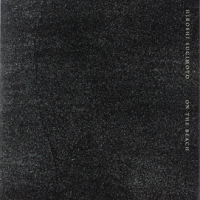Hiroshi Sugimoto's photography is mesmerizing partly because of its other-worldly perfection — his black-and-white prints are flawless. On its own, however, this isn't enough to justify the significance of his work in the contemporary art scene. His deadpan images of animal dioramas, waxwork figures and minimalist seascapes have been highly influential in embodying key aspects of post-modernism — ideas such as hyperreality and the critique of authenticity — while being themselves beautifully crafted objects.
On the Beach, by Hiroshi Sugimoto.
IMA BOOKS, Art.
"On the Beach" is a series of images that were exhibited as platinum prints in 2014, and subsequently published as a book, though the original photographs were taken in the 1990s. The title is literal, in that the photographs are of junk car parts found partially buried in black volcanic sand on beaches along New Zealand's coast. However, Sugimoto's short texts in the volume are also obliquely reminiscent of themes in the Nevil Shute novel of the same name, a book that depicted the end of civilization after a nuclear apocalypse.
Sugimoto's dark, semi-abstract images are reproduced in such a way that they resemble the matte sheen of platinum prints, though unfortunately they don't have the same depth of contrast.
The main set of plates is preceded by two color images: one of the rusted remains of a sword from the Asuka Period (552-645), the other of a sword from the later Kamakura Period (1185-1333), which has been restored with a pristine blade. An interesting side-effect of the printing is that a bronzing effect causes the sword to shimmer — the image also becomes a thing in itself.



